
OnePlus introduced its first television in India in early 2020. The high-end OnePlus TV Q1 featured a QLED panel and innovative but polarizing features like a slide-out soundbar. Since then, the company has switched over to a mass-market approach with its cut-price, entry-level smart televisions in a fashion similar to its affordable phones strategy with the Nord lineup. In for review is the latest in the series, the OnePlus TV U1S.
While the U1S isn’t quite a return to the high-end for the brand, it does represent a slightly more premium, mid-range option to take on increasing competition from Redmi and Realme. It’s clear that the OnePlus TV U1S will need more than tight ecosystem integration to differentiate itself. Find out if it can separate itself from the pack in the Android Authority OnePlus TV U1S review.
What you need to know about the OnePlus TV U1S
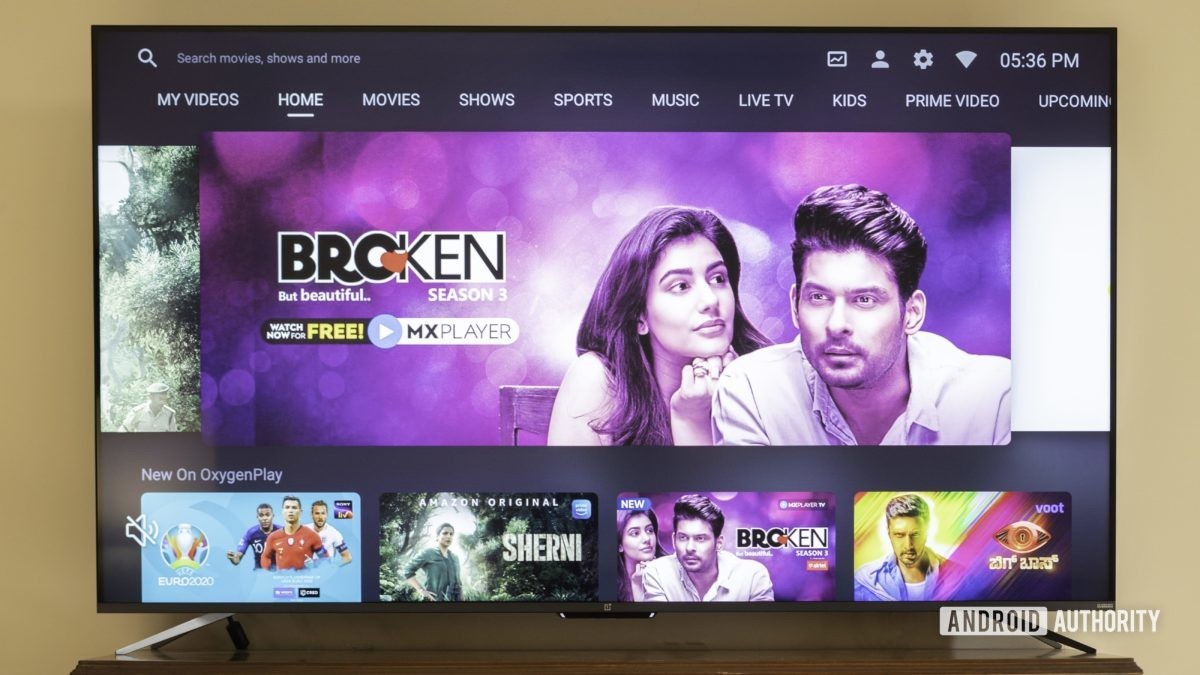
- OnePlus TV U1S 50-inch: Rs. 39,990 (~$545)
- OnePlus TV U1S 55-inch: Rs. 47,999 (~$655)
- OnePlus TV U1S 65-inch: Rs. 62,999 (~$860)
The OnePlus TV U1S ships in a range of sizes starting at 50-inches, and going up to 55- and 65-inch variants. All three models offer a similar feature set and port selection, with the key difference being the panel size. The price range reflects the size, with the smallest 50-inch variant starting off at Rs. 39,990 (~$545). The top-end 65-inch model that we are reviewing is available for Rs. 62,999 (~$860).
Screen size aside, the 65-inch model includes four speakers in a split configuration of two full-range drivers combined with two tweeters, while the smaller sizes make do with just two full-range drivers each.
As with previous models, the OnePlus TV U1S is restricted to India at launch, however, the company has confirmed that it plans to bring the models to Europe in the future.
How’s the design?
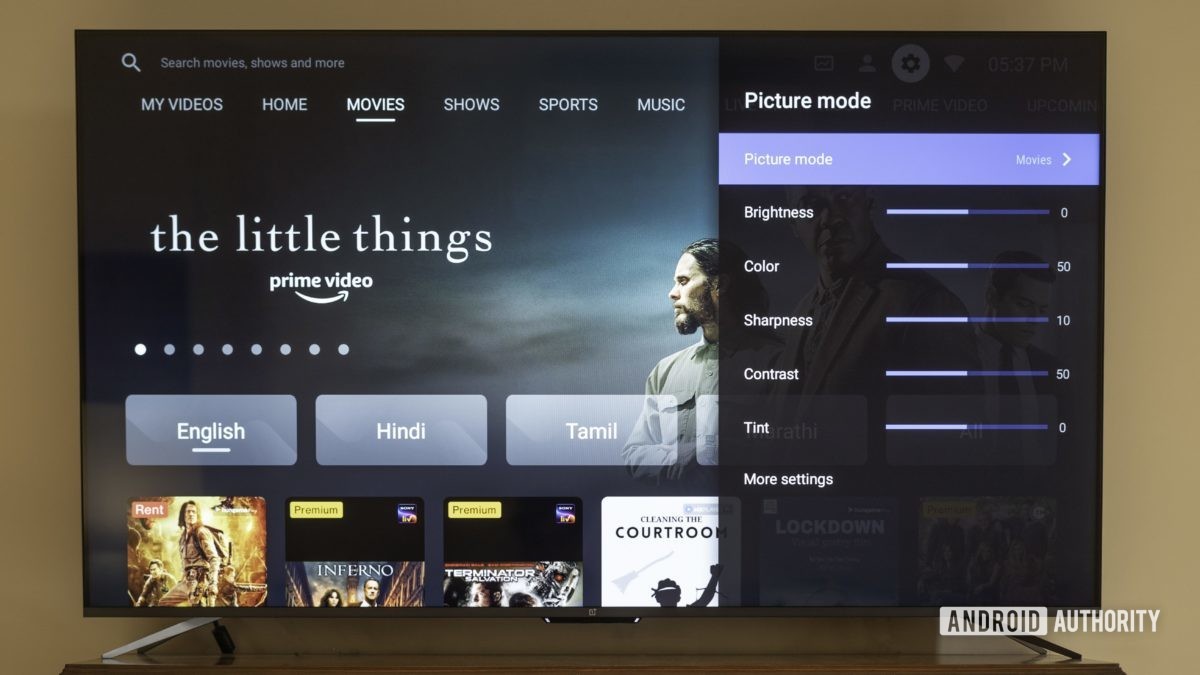
Minimalism is the flavor of the season, and the OnePlus TV U1S employs a pretty pared-down design. It’s neat to look at, and other than the control module below the lower bezel, the television seamlessly fades into the background. Both the frame and back of the television are finished in high-quality plastics.
Viewed straight on, the display is surrounded by minimal bezels in black. A dark silver frame, similar to the one on the Xiaomi Mi QLED TV 75, runs along the bottom edge with an emblazoned OnePlus logo. Meanwhile, a second Dynaudio logo sits over at the bottom right corner, indicating the collaboration between the two brands (we’ll get to that later).

Under the frame, a secondary module peeks out containing an infrared receiver, as well as controls for the built-in far-field microphones. Meanwhile, LEDs on either side indicate the current status of the television, and toggling the microphone’s mute switch activates another row of LEDs. The lights can get quite distracting while watching content, and I wish OnePlus offered a way to dim them, or, better still, switch them off entirely.
The row of lights running under the display can be very distracting.
Unlike some of the alternatives at this price point, OnePlus includes metal feet with the television and they do a great job at keeping the sizeable panel stable. There is still a bit of wobble if you tap the television hard, but it’s not too bad all things considered.
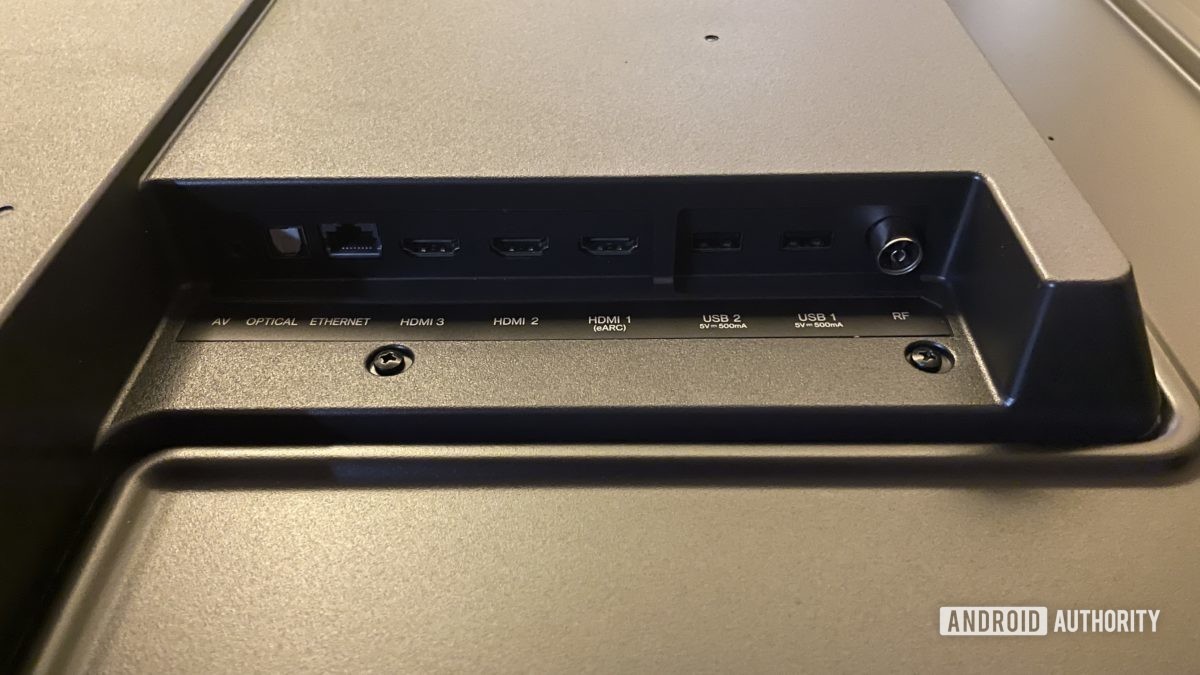
The port selection on the OnePlus TV U1S is straightforward and includes all the essentials. You’ll find three HDMI ports, two USB ports, optical, ethernet, and RF input, and an all-in-one AV jack. Wi-Fi and Bluetooth 5.0 are table stakes and you’ll find them here, of course. I had some trouble with getting local high-bitrate content to stream reliably but these issues were resolved with a firmware update.
Additionally, if you are planning on hooking up the television to a soundbar or an external receiver, the first HDMI port supports eARC and will passthrough Dolby Atmos audio to a compatible receiver.
Overall, the level of kit on the OnePlus TV U1S is exactly what you’d expect from a television at this price point and that’s fine. What you get is a well-built, good-looking television that isn’t trying to reinvent the wheel with gimmicks but rather is focused on getting the essentials right.
What’s the software like?

If you’ve ever wondered why smartphone manufacturers are making a play in the cutthroat television space, the answer is software. Panel technology in the affordable segment is commoditized, but the real differentiator and moneymaker is software.
Android TV buyer’s guide: All you need to know about Google’s TV platform
Just like Xiaomi’s Patchwall interface, OnePlus is focusing on building its own launcher experience on top of Android TV. The premise is the same as with Patchwall, with OxygenPlay offering a unified experience around a range of streaming services. Curated content is shown at the top of the listings, and the idea is to showcase the best content based on your usage patterns, as well as language settings.
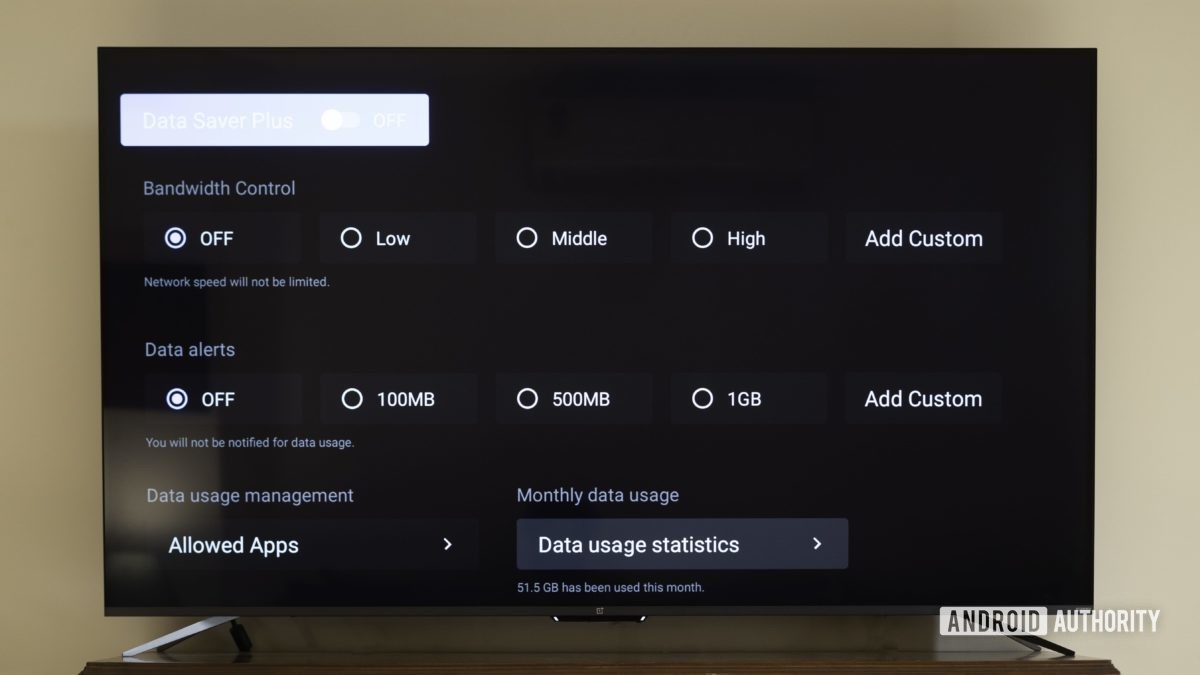
The software works great and I found it to be well optimized. However, I found myself going back to the vanilla Android TV interface for its speedier access to the apps that I use most often. There’s a distinct difference between how the two operate and I feel there’s room for both an apps-first, and content-first approach, depending on how you use the television.
I did, however, like the data saver tab in OxygenPlay. Broadband internet isn’t ubiquitous in India, and many users opt to tether to generous mobile data plans instead. A system-wide setting lets you set profiles to control bandwidth. You can also set data usage alerts and switch off background network access for specific apps, as well as keep an eye on overall data use.
What’s it like to use the OnePlus TV U1S?
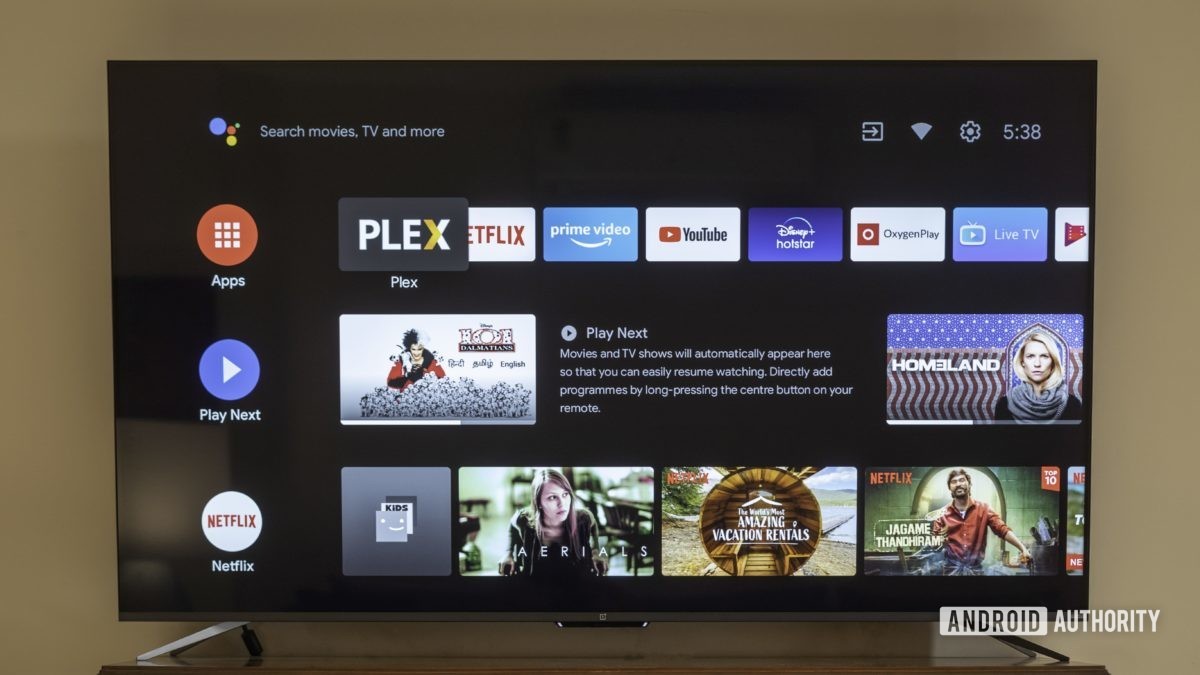
Picture quality and features
The OnePlus TV U1S sports a 4K HDR display with an IPS panel. The screen supports a bevy of HDR formats including HLG, HDR10, and HDR10+, but not Dolby Vision. Unfortunately, that’s not the only omission. There’s no local array dimming whatsoever, nor does the television have a very high peak brightness level. It’s also a 60Hz panel, though that’s what you would expect at this price point.
The out of the box color calibration leaves much to be desired — as is usually the case — and I would recommend most users switch to the movie profile to get a semblance of color accuracy. Even then, the panel tends to boost blue tones, giving the screen a cooler tone. You might also want to switch off MEMC as it takes away from the cinematic experience and imbues all content with a soap opera effect.
The panel looks good once set to movie mode, but black levels leave much to be desired.
With the caveats out of the way, I quite enjoyed watching content from the usual suspects like Netflix or Prime Video, once the display had been tweaked a bit. However, I wasn’t very impressed by the black levels on offer. Coupled with the lack of local array dimming, the screen looks a dull grey instead of black. By bringing down the screen brightness level, I was able to mitigate this to a degree, but darker shows like, well, Dark, will be a less than stellar experience.
I also hooked up my PlayStation 5 to the television and enjoyed a bit of Final Fantasy VII Remake. Unlike the Xiaomi QLED TV, I faced no issues with random disconnections or screen flicker.
Audio

We’re reviewing the 65-inch version of the OnePlus TV U1S, and this particular model ships with four drivers. OnePlus claims that the audio performance was tuned by Dynaudio. The Danish company recently lent its smarts to the excellent Oppo Enco X true wireless earphones as well.
I can confirm that the audio performance is a step above most competing brands. Not only do vocals sound clear, but there is also a depth to the low-end that belies the size of the speakers in a panel as slim as this. The sacrilegious act of listening to music through TV speakers isn’t bad either. In fact, I made use of the Bluetooth speaker function to pair up my phone and play some Johnny Cash over the television’s speakers. The experience works well enough in a pinch if you don’t feel like splurging on external speakers.
However, where audio performance falls down is consistency. The television can output high-quality audio, but that’s not always the case. Every so often, volume levels would drop down to incredibly low levels even when set to max. This happened intermittently across a range of streaming services, making it hard to pinpoint exactly where the fault lies. A subsequent software patch largely fixed things, though I still came across the issue a couple of times after the update.
How is the remote?

The remote on the OnePlus TV U1S is a mixed bag. You’ll find all the essential controls including a mute key, as well as shortcuts for OxygenPlay and the standard Android TV UI. As is the case with practically every Android TV device, the remote includes a microphone to use Google Assistant.
Read more: The best Android TV boxes of 2021 you can get
While I really liked the general hand feel of the elongated remote and the concave buttons, the button layout itself is baffling. More often than not, I ended up pressing the Google Assistant button instead of the home key. I’d also have liked a dedicated power button instead of the long-press action on the OnePlus key.
Smart hub functionality
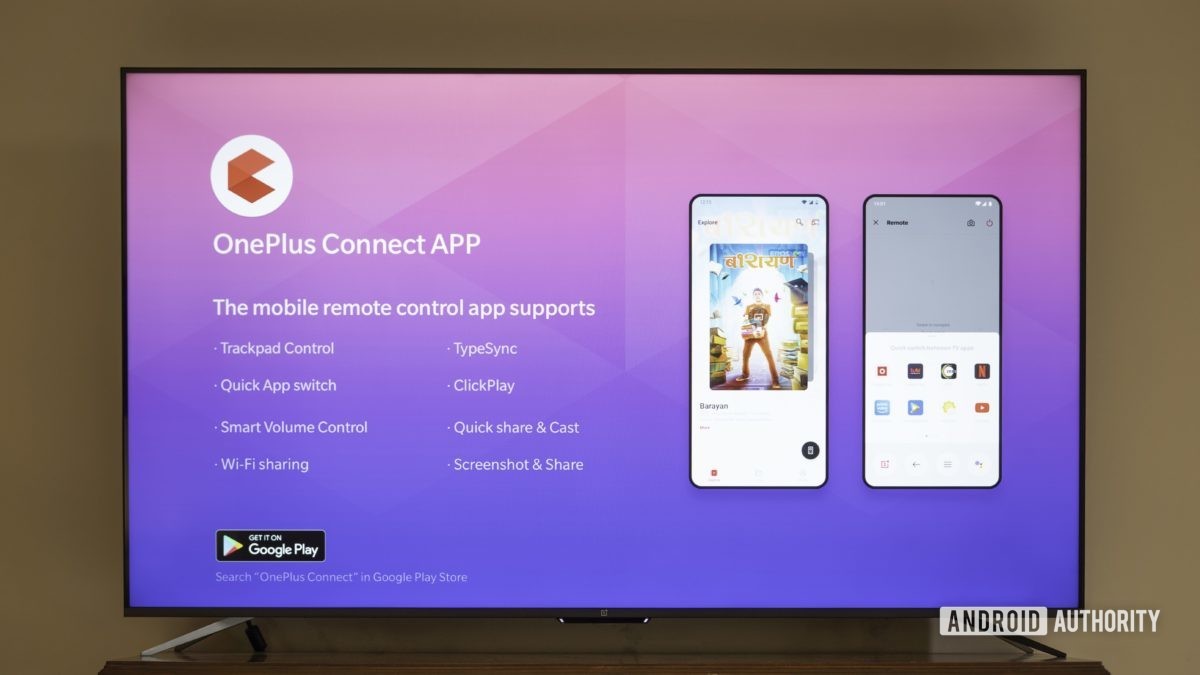
OnePlus has done a bit more than Xiaomi to deliver smart functionality that goes beyond deep Google Assistant integration. Using the OnePlus Connect app, users can perform a range of tasks like selecting content from compatible apps, pulling up screenshots from the TV, and using the app as a trackpad or keypad. A lot of these features are already available in the Android TV app, however, the ability to pull up screenshots is particularly convenient.
The integration with OnePlus products runs deep, if you care about it.
The app also lets you automatically reduce the volume of the television every time you get a phone call. In practice, the feature was a bit hit or miss and I found it more annoying than useful. It was simply easier to walk away or pause the content instead. If you’ve got a OnePlus Watch on hand, you can use the built-in OnePlus Connect functionality to control basic features like volume.
Finally, like the Xiaomi Mi TV QLED 75-inch, there are built-in far-field microphones that can be used to invoke Google Assistant. Real-world use, however, is less than ideal since the microphone often picked up random phrases instead of the wake word and activated Google Assistant while I was watching content. A few tries later, I ended up flipping the physical mute switch, since it is much easier to just use the microphone on the remote instead.
Specs
| Specs | OnePlus TV U1S - 65inches |
|---|---|
| Display | 65-inches 3840x2160 93% DCI-P3 LED No local dimming |
| HDR | HDR10 HDR10+ HLG No Dolby Vision |
| Speakers | 30W 2.0 Channel 2 Full range drivers + 2 tweeters Dolby Audio |
| Software | Android 10 OxygenPlay |
| Smart Hub | Google Assistant Far-field microphones Hands-free control Physical toggle switch |
| Connectivity | 2.4GHz/5GHz WiFi Bluetooth 5.0 Ethernet AV Input Optical output USB 2.0 x 2 HDMI 2.1 x 3 eARC x 1 |
Value and competition
The OnePlus TV U1S has a few neat tricks up its sleeve that give it a leg up over the competition. If you are entrenched in the OnePlus ecosystem, the OnePlus Connect integration and tie-in with the OnePlus Watch make it a no-brainer. Additionally, the superior audio quality is also a good enough reason to opt for it over the competition. Of course, OnePlus isn’t the only player in the category.
The Redmi Smart TV X65 (Rs. 58,990) is one of the best options as far as affordable large-screen panels go. Sure, the build quality and audio quality aren’t quite as good, but you get additions like Dolby Vision and image quality that is on par with OnePlus’ offering.
The TCL 65715 (Rs. 91,899) is a fair step-up option and the QLED panel is bound to offer much better image quality. It will, however, require you to increase your budget quite a bit.
Finally, you could also look at budget options from Kodak, but the poor service and support network makes these televisions hard to recommend.
OnePlus TV U1S review: The verdict
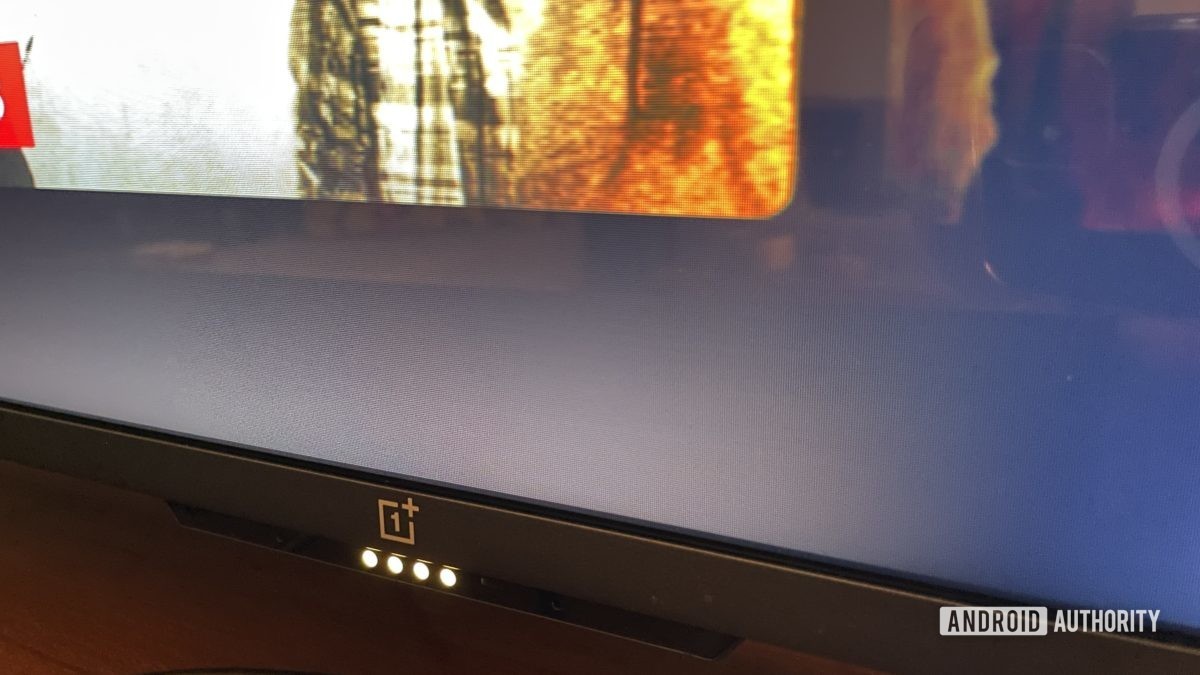
When OnePlus launched the Q1, it wanted to create a splash with its innovative speaker system that set it apart. This time around, the company is focused on creating a solid product that gets the essentials right, with a few additions to sweeten the deal. As it turns out, the approach works just fine.
The OnePlus TV U1S might lack bells and whistles, but the basics are all solid and it's an easy recommendation for most users.
The OnePlus TV U1S doesn’t have all the bells and whistles, but a decent panel, robust port selection, quality audio, and clean aesthetics are all you really want in an affordably-priced television. OxygenPlay is an excellent addition and should please users who want a more curated content experience.
The lack of Dolby Vision support is disappointing, and there are a few software issues that still need to be resolved, but two updates later, it appears that OnePlus is committed to fixing any lingering issues. Overall, the OnePlus TV U1S is a safe bet for anyone looking to buy a large-screen smart television.
from Android Authority https://ift.tt/3dEKmH1

